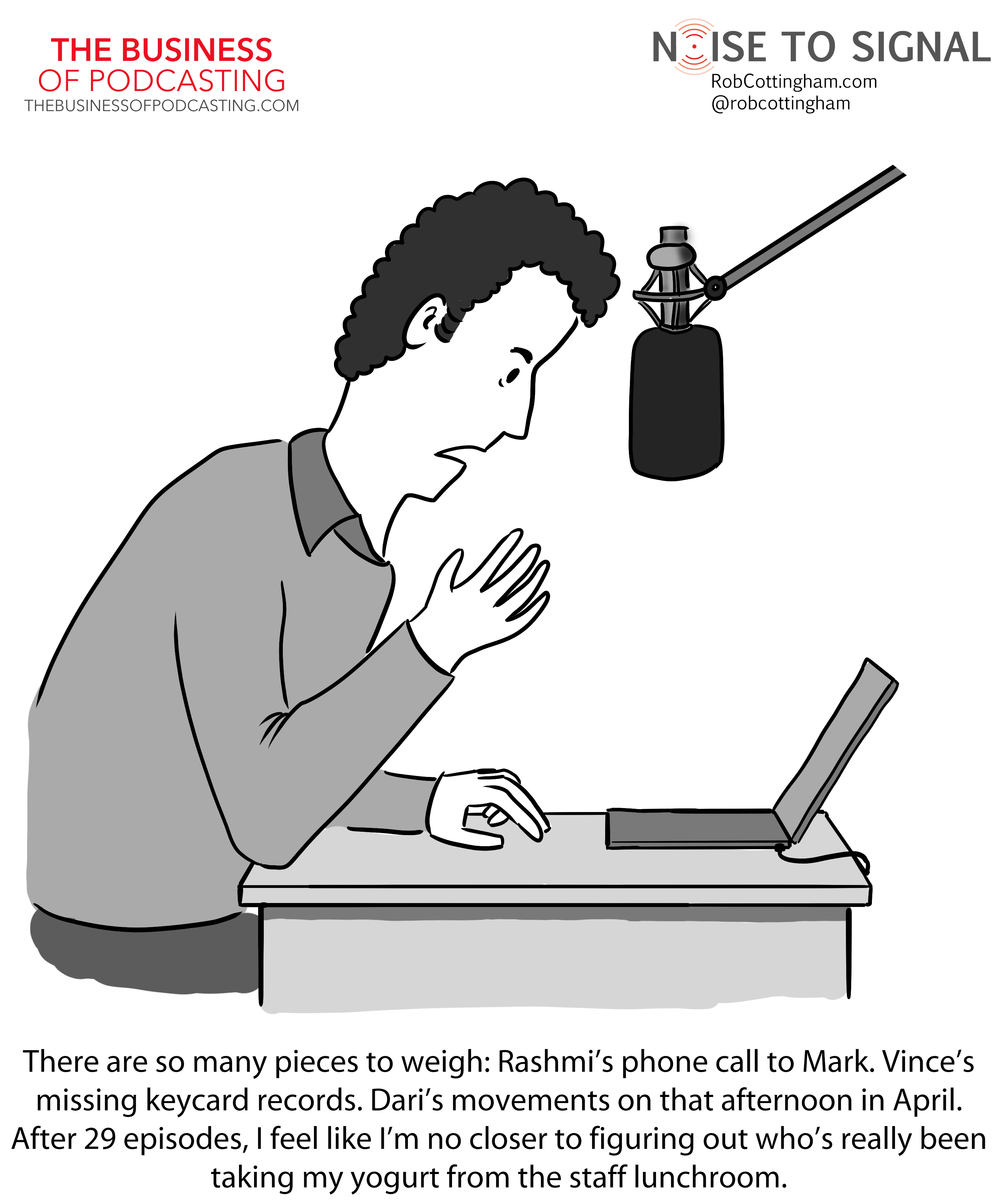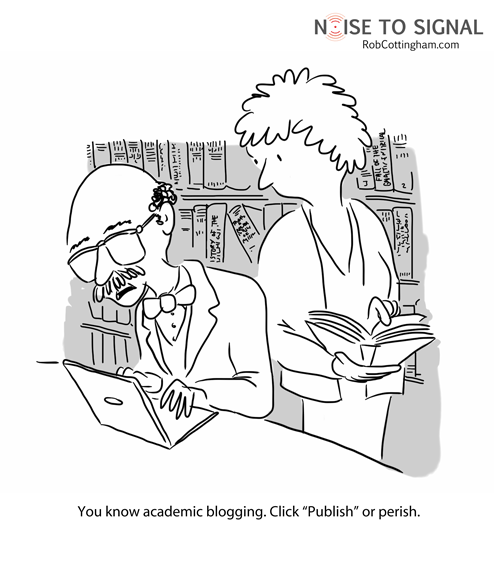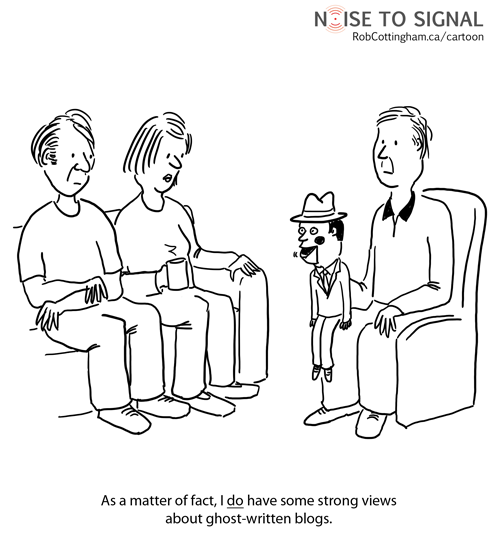Here’s the third in a series of eight cartoons from the fab new podcasting book, The Business of Podcasting by Donna Papacosta and Steve Lubetkin. Check back every Monday for the latest one!
When the history of podcasting is written twenty years from now, it may be that every date is described as BSP and ASP: Before the Serial Podcast, and After the Serial Podcast.
It’s hard to overstate the impact of Serial in the resurgence of podcasting over the last year — from bringing a whole new audience to the medium, to winning podcasting’s first-ever Peabody Award, to inspiring storytellers with its mix of smart reportage and beautiful sound design.
But podcasting was hardly on its way out before Serial came onto the scene. There was a thriving audience for all kinds of podcasts: storytelling, teaching, marketing, news, straight-up entertainment and much more.
One of the earliest podcasts I subscribed to was For Immediate Release: The Hobson & Holtz Report. Week in and week out, Neville Hobson and Shel Holtz faithfully delivered news and insights about organizational communications in the digital era. FIR has since blossomed into a network of two dozen podcasts, serving communicators of all stripes.
Today, Neville steps away from the mic after recording the last episode of Hobson & Holtz. I can’t begin to say how grateful I am for the past decade of podcasts — from those early years when us communicators who thought blogs might have some legs were regarded as bat-spit crazy, to today when a healthy Facebook and Twitter presence are table stakes for most organizations.
Thanks, Neville. Today’s cartoon is for you. And Shel, I can’t wait for September 21 to hear the new For Immediate Release.





